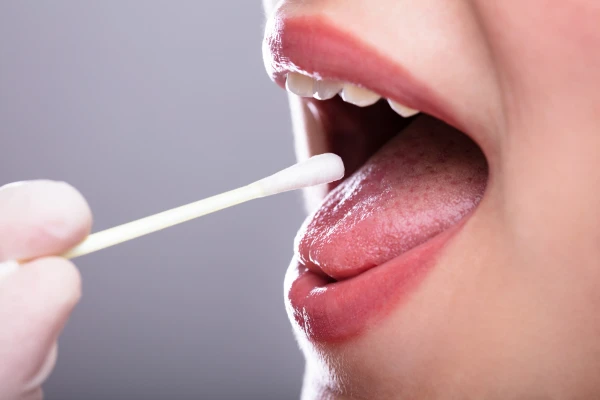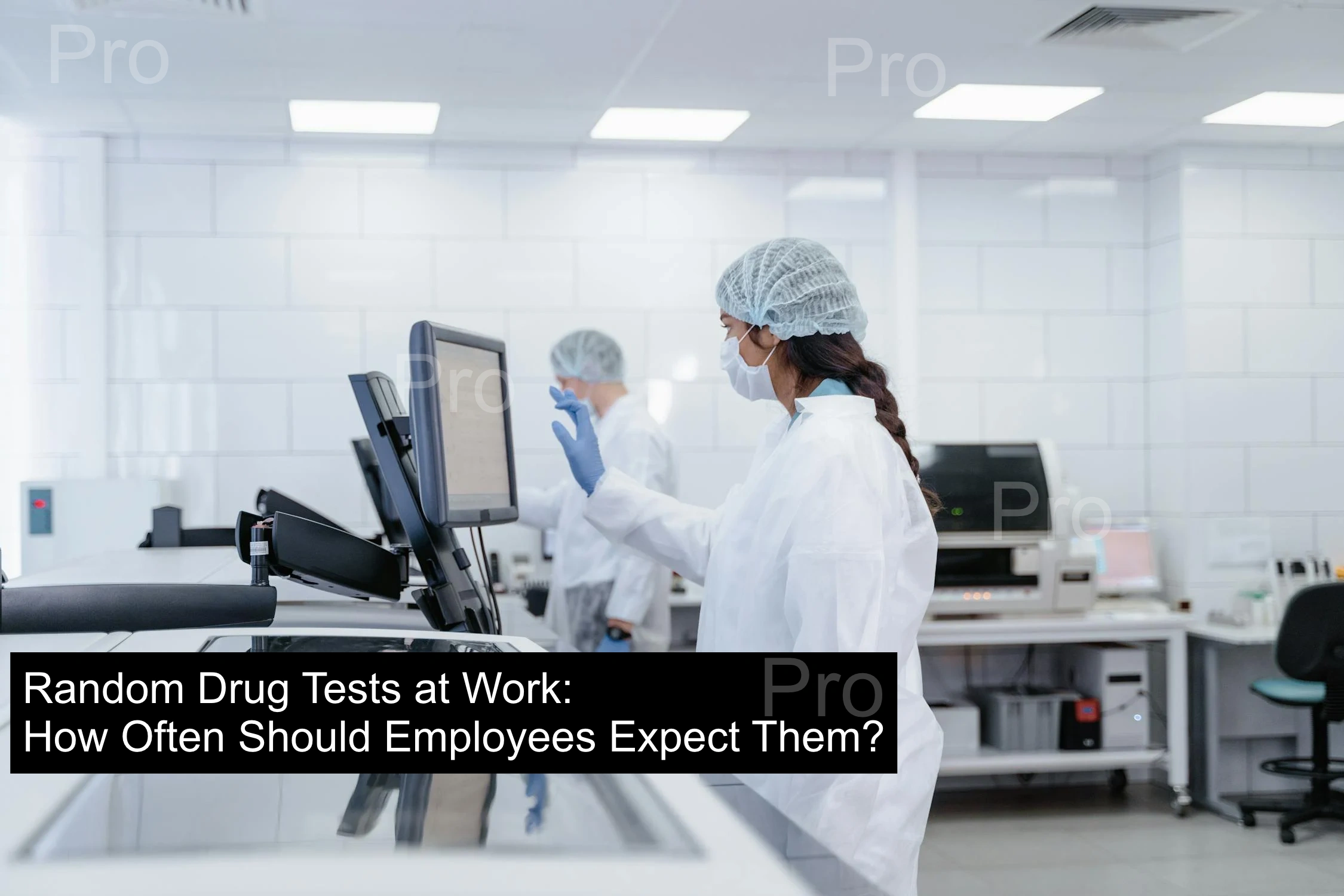Making sure a safe and efficient workplace for every employee depends critically on workplace drug testing. It enables companies to spot and handle possible substance usage problems that can endanger performance or safety. Acting as a disincentive, random drug tests help employees to follow corporate standards and keep a drug-free workplace, therefore serving a significant role.
- Random drug testing programs are used by many companies to reduce workplace mishaps and safeguard their reputation as well as staff member welfare.
- Often asked is, “how often are random drug tests done?” a fundamental concern.
- Though business policy, industry standards, and the particular needs of the company will determine the response.
- Usually scheduled frequently and without prior notice to guarantee efficacy.
Understanding Random Drug Testing
To ensure fairness and unpredictability, a “random” drug test is conducted without previous notice and uses a really random selection methodology. Workplaces utilize wholesale drug test to dissuade drug usage and ensure a drug-free atmosphere. Employees are bothering about how often are random drug tests done, as it can happen at any moment throughout employment, unlike pre-employment drug tests, which are required and planned in advance.
- Safety-focused industries like transportation, construction, manufacturing, and healthcare use random drug testing most.
- Substance use is a major workplace safety issue in many industries because workers must stay awake and operate machinery or automobiles.
- Federally regulated enterprises like the Department of Transportation and the Federal Aviation Administration must also do random testing.
- Many wonder, “how often ae random drug tests done?” Company policy and regulatory requirements determine the frequency.
- Depending on employee role risk, some businesses conduct them periodically or biannually, others monthly or regularly.
- Random drug testing helps these vital businesses maintain a safe and reliable workforce.
Legal Framework and Regulations
Federal laws such as the DOT’s demand occupational drug testing in companies involving public safety including transportation. Usually demanding pre-employment, post-accident, and random drug testing, these rules help to guarantee compliance. State laws vary and influence how companies handle drug testing policies.
Testing is limited in several areas to protect worker confidentiality. Though DOT rules mandate them at least yearly percentage rate to discourage drug use and increase job safety, the issue “how often are random drug tests done” is often asked. Employers have to be aware in order to follow federal and state regulations and defend employee rights.
Employee rights and employer responsibilities define fair and compliant workplaces. Employees have rights toward a workplace free of harassment, discrimination, and dangerous situations as well as privacy over personal information and drug testing.
How Employers Determine Testing Frequency
Many elements affect the frequency of drug testing in different environments: policies of the company, industry standards, and the particular responsibilities of staff members. Safety-oriented businesses, such those in transportation or construction, sometimes run more frequent drug testing to guarantee a safe workplace.

Companies decide on how often are random drug tests done by juggling industry norms and internal corporate policy with legal requirements. Many times, company policies are created to fit the culture, beliefs, and risk tolerance of the company, so enabling flexibility in the application of testing.
How Employees Are Selected for Testing
The random drug testing selection procedure is meant to encourage impartiality and fairness by means of personnel. Usually, a computer-generated system chooses people at random from a pre-defined pool of workers, therefore guaranteeing that everyone has an equal opportunity of being tested. Depending on corporate policy and industry standards, employers frequently set guidelines to decide how often are random drug tests done. While keeping a safe and efficient workplace, this erratic schedule discourages substance usage.
Many companies manage the staff selection process for drug testing using outside testing companies in order to guarantee objectivity and compliance.
These organizations minimize the possibility of partiality or prejudice by randomly choosing members from the employee pool using advanced, objective algorithms.
Once chosen, staff members usually get clear directions on the testing process and are told discreetly.
In order to preserve workplace safety, consent processes are also followed whereby staff members must agree to the test.
Using outside agencies and open notification policies supports integrity and confidence in the testing process.
What Substances Do Random Drug Tests Detect?
Workplace drug and alcohol testing generally targets common misused drugs including marijuana, cocaine, opiates, amphetamines, and PCP. Alcohol testing is crucial for safety and productivity in sectors such transportation and construction that call for sensitivity to safety. Random drug testing gives responsibility, hence companies utilize it to discourage drug use. How often are random drug tests done – this question bothers both employees and employers. Answers depend on industry standards, office policies, and laws.

Drug testing issues surround synthetic drug use and prescription medication abuse. Legal prescriptions for opioids and stimulants are given, but they might lead to dependence and abuse, so they are difficult to find in normal testing methods.
How Are Random Drug Tests Conducted?
| Step | Details (Easy Words) |
|---|---|
| Types of Tests | There are four main types: urine, saliva, hair, and blood tests. Each has different uses. |
| Urine Test | Most common. It shows recent drug use and is very reliable. |
| Saliva Test | Quick and not invasive (no needles). Good for spotting recent use. |
| Hair Test | Can show drug use over a long time (weeks or months). Helps find long-term patterns. |
| Blood Test | Very accurate, but it uses needles and is less common. Best for finding drugs that are active in the body right now. |
| How Often? | Depends on company rules, job type, or legal rules. There is no fixed schedule. |
| Sample Collection | The person gives a sample (urine, saliva, hair, or blood). Staff watch to make sure it’s done properly and no cheating happens. |
| Sample Handling | The sample is labeled and sent to a lab. Chain-of-custody rules are followed to keep it safe and traceable. |
| Lab Testing | Lab uses special tools to check for drugs. |
| Results Time | Usually ready in a few days. |
| If Test is Positive | They might do a second test to confirm the result and make sure it’s not a mistake (false positive). |
| If Test is Negative | It means no illegal drugs were found. The person and employer can be confident. |
| Impact of Results | Positive results might lead to job issues, legal problems, or being asked to join help programs. Negative results mean no action is needed. |
Best Practices for Implementing Random Drug Testing
Establishing a random drug testing program forces companies to give compliance with laws, fairness, and openness first priority. Open communication with staff regarding the goals and practices of the program helps to build confidence and emphasizes its need in preserving a safe workplace.
To ensure that the selection process is truly random and prevent any suspicions of bias, employers should develop written policies outlining how often are random drug tests done. Furthermore, following state and federal rules is really essential to keep moral behavior and avoid legal problems.
Including these best practices can help companies effectively carry out a program supporting employee well-being and workplace safety.

